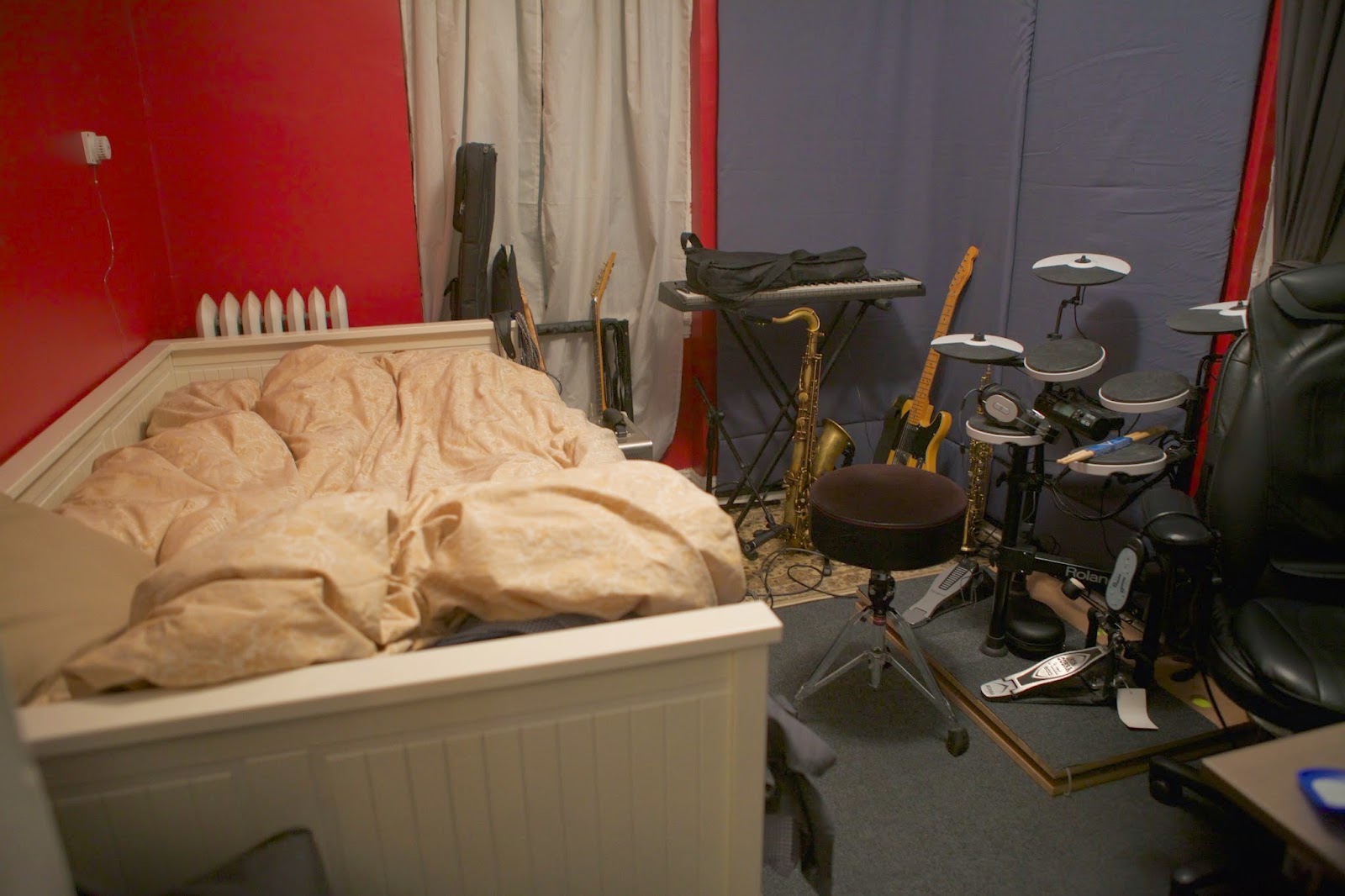Luckily I'm on the top floor and the room I'm renovating is in the corner, so the main problem is isolating the floor as much as possible so that my downstairs neighbor doesn't hear too much noise. To prepare for the project I had to patch the walls and ceiling that I've been neglecting all year. That's a whole other story...
So with the walls and ceiling patched and painted it was time to tackle the flooring. The original floor was an old hardwood floor. What I decided to do for the soundproofing was to purchase a product called Peacekeeper Barrier from a company called Audimute. I chose that product because of the low price compared to other options, and also the fact that it's made from recycled tire rubber. I also wanted a hard surface on top of the peacemaker pad so I made an unusual but very cheap choice. I decided to install 1/8 inch hardboard, a.k.a. Eucaboard, and put carpet tiles over that. The carpet tiles cost about $100 and the Eucaboard cost about $22. The peacemaker barrier cost $160. So, it was approximately a $300 floor treatment. Finally I chose to hang sound absorption sheets from the walls to quiet the room down a bit more. The absorption sheets cost $244.
I rolled the peacemaker barrier out onto the floor and cut pieces to fill in small gaps.
The black material is the peacekeeper barrier. The joints were covered using sound isolation seam tape (it looks like electrical tape). Over the peacekeeper barrier I placed the 1/8 inch eucaboard. I bought 4X8 sheets cut into thirds so they would fit in my car. For the installation I cut up a few pieces by scoring them with a utility knife and bending the pieces apart. This made for some sloppy cuts but I thought it was adequate since I would be covering it up with carpeting.
I joined the eucaboard panels with duct tape and then started installing the carpet tiles.
Finally I put the bed back together and brought in a desk, some rugs, my laptop, office chair, guitars, amp, keyboard, couple saxophones, and an electronic drum kit. The electronic kit has an isolation platform that I built out of mdf and tennis balls.
Now that I'm basically done I'm pretty happy with the results. The room is so quiet I can hear my ears ringing and the ceiling fan spinning at night. Moving from the hallway into this room is similar to the feeling of walking into a quiet movie theater.
If I could do it again, I might consider 3/16 or 1/4 inch hardboard, possibly 6.4mm peacemaker barrier, and maybe a thicker carpet. But the reason I kept things so thin was because I didn't want to have to modify the baseboard and shoe mouldings.
If I wanted a much more professional installation I would consider a laminate flooring over the peacemaker barrier. But that would have required power tools, possibly leveling the floor and installing a new moulding. And finally, to take things even further I would consider covering the walls with peacemaker and another layer of sheetrock.
As far as how well the soundproofing works, I can't say that i know for sure. But I have been practicing tenor saxophone in the daytime. That is the loudest instrument I play. I tend to play my electric guitar turned a little lower, and all of my bass playing has been direct into the board. The ultimate way to annoy your neighbors though is by playing the drums. Even electronic drums can be annoying for your neighbors. That is why I built an isolation platform just for the drums.
I still have to cut 1/4 inch from the bottom of the door so that it will open all the way to get past the new floor thickness. And I might consider some soundproofing to the door as well later on.





No comments:
Post a Comment